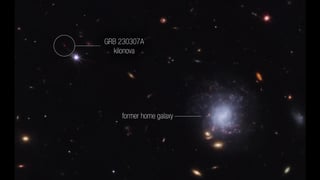Early Universe Star Formation Supermassive Black Holes Dark Matter James Webb Space Telescope Milky Way JADES-GS-z14-0 Firefly Sparkle Gravitational Lensing Cosmic Horseshoe Early Galaxies Galaxy Dynamics High-Redshift Galaxies Galactic Interactions Galaxy Mergers Primordial Galaxies Galaxy Size Fossil Group Galaxies Black Holes Zhúlóng Dwarf Galaxies Disk Galaxies Cosmic Web Dark Matter and Dark Energy Galactic Cannibalism Chemical Composition Interactions Star Clusters Early Universe Galaxies Early Galaxy Formation Fossil Galaxy Merging New Class of Galaxies Massive Galaxies J0107a Spiderweb Cluster Spiral Galaxies Ionized Hydrogen Gas Galaxy Clusters Cosmic Evolution Little Red Dots CAPERS-LRD-z9 Massive Stars Cluster Dynamics Lensed Galaxies Fossil Galaxies Cosmic Structures Galaxy Collisions Deep Field Observations Small Red Dots Fossil Groups Distant Galaxies Host Galaxy Characteristics Galactic Superwinds Galaxy Clustering Gravitational Effects Cannibalization Era of Reionization NGC 2937 and NGC 2936 Hierarchical Galaxy Formation CEERS Survey Cosmic Horseshoe Galaxy Supermassive Black Hole Influence Galaxy Jets REBELS-25 Dark Energy Quasar Fields Ultra-Massive Galaxies Elliptical Galaxies Dark Matter Distribution Cosmic Structure Jellyfish Galaxies Spiderweb Protocluster Firefly Sparkle Galaxy Supermassive Black Holes Influence Bullseye Galaxy

Authors present evidence for a relic of past black-hole activity reshaped by superwinds in a dense cluster environment.


